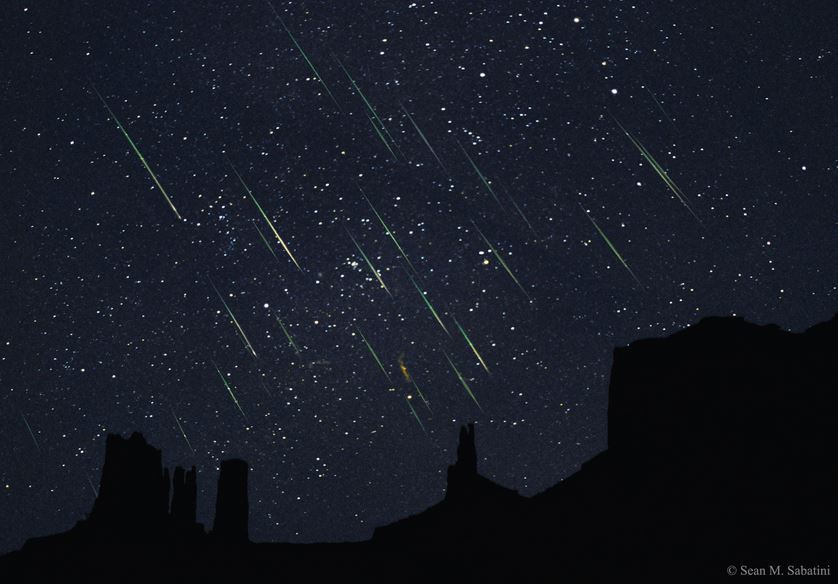
December 2017 Sky
- Posted by OCastronomy
- On December 1, 2017
- 0 Comments
- Aldebaran, Antares, Beehive cluster, December solstice, Geminid Meteor Shower, Jupiter, Mars, Mercury, Mercury at inferior conjunction, Pleiades, Regulus, Spica
December 2017 Sky
| 2 | Moon near the Pleiades (evening sky) at 22h UT. |
| 3 | Moon near Aldebaran (midnight sky) at 13h UT. Occultation visible from northeast Asia, Alaska, northwest Canada. |
| 3 | Full Moon at 15:47 UT. |
| 4 | Moon at perigee (closest to Earth) at 8:59 UT (357,492 km; angular size 33.4′). |
| 7 | Moon near Beehive cluster (morning sky) at 9 UT. |
| 8 | Moon near Regulus (107° from Sun, morning sky) at 23h UT. Occultation visible from N Europe and N Asia. |
| 10 | Last Quarter Moon at 7:52 UT. |
| 13 | Mercury at inferior conjunction with the Sun at 2h UT. Mercury passes into the morning sky. |
| 13 | Moon near Spica (morning sky) at 2h UT. |
| 13 | Moon near Mars (morning sky) at 19h UT. Mag. 1.6. |
| 14 | Geminid Meteor Shower peaks at 6:30 UT. Produces bright, medium-speed meteors at its peak (up to 80 meteors/hour). Most reliable meteor shower. Easy to observe (radiant shown on sky map). Best seen after midnight. |
| 14 | Moon near Jupiter (39° from Sun, morning sky) at 17h UT. Mag. −1.7. |
| 18 | New Moon at 6:30 UT. Start of lunation 1175. |
| 19 | Moon at apogee (farthest from Earth) at 1h UT (distance 406,603 km; angular size 29.4′). |
| 21 | December solstice at 16:28 UT. The time when the Sun reaches the point farthest south of the celestial equator marking the start of winter in the Northern Hemisphere and summer in the Southern Hemisphere. |
| 24 | Mercury 8.1° NNE of Antares (23° from Sun, morning sky) at 1h UT. Mags 0.3 and 1.0. |
| 26 | First Quarter Moon at 9:19 UT. |
| 30 | Moon near the Pleiades (evening sky) at 9h UT. |
| 31 | Moon near Aldebaran (evening sky) at 1h UT. Occultation visible from east USA, east Canada, Greenland, northern Europe. |
| December 2017 Sky All times Universal Time (UT). | |


